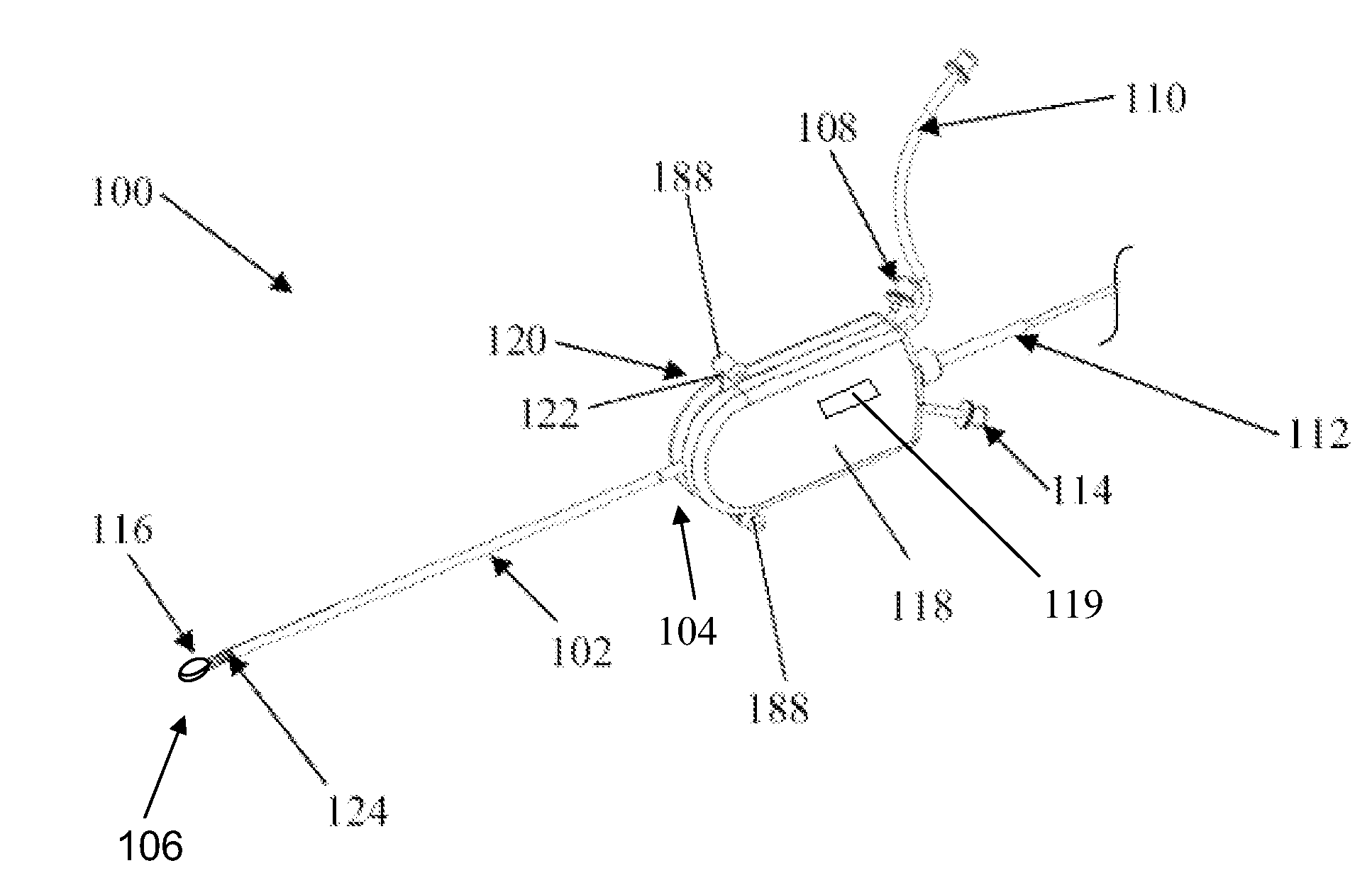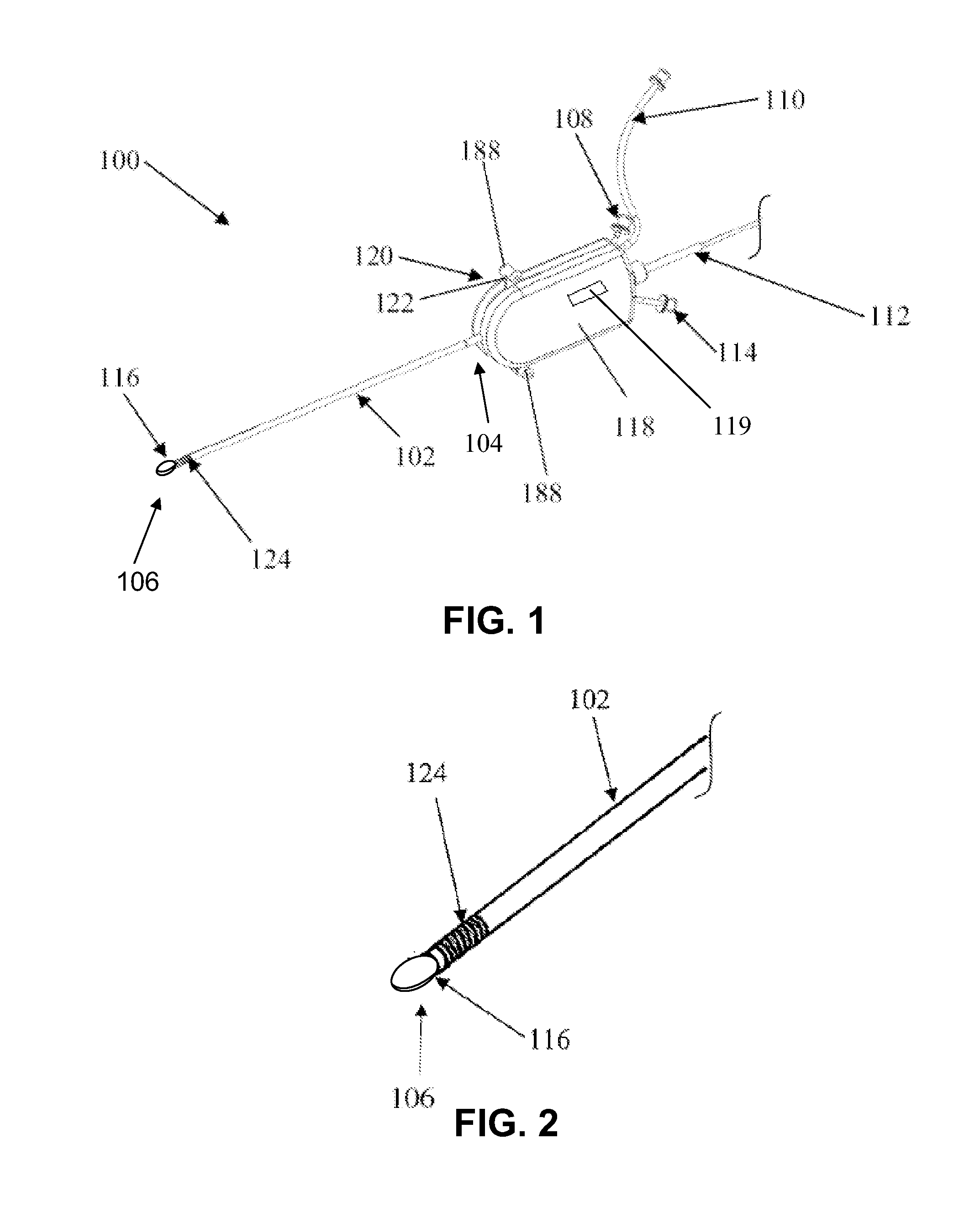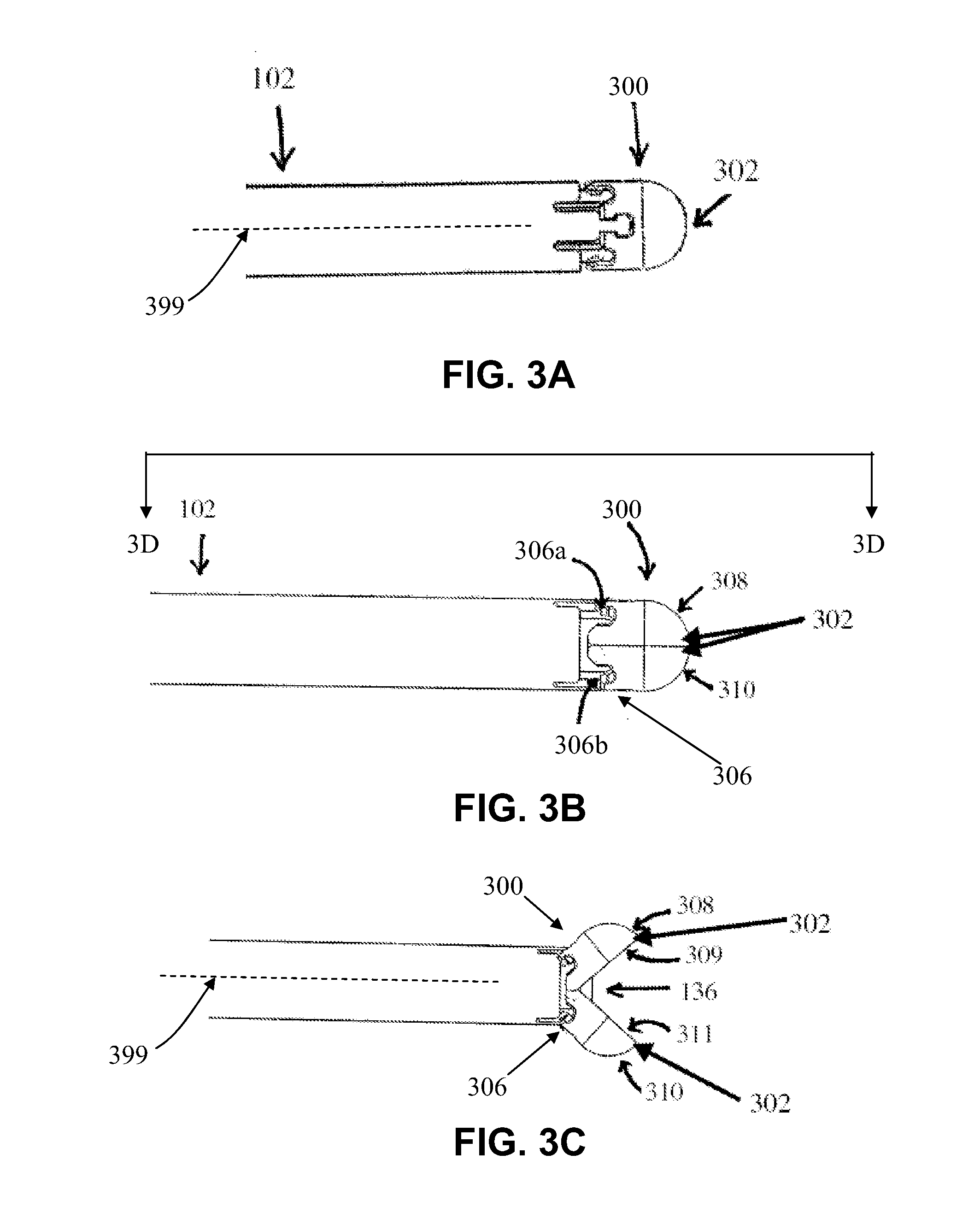Retractor cannula system for accessing and visualizing spine and related methods
a cannula system and rectal cannula technology, applied in the field of rectal cannula system for accessing and visualizing spine, can solve the problems of lack of real-time visualization capabilities, inability to provide tactile sensation to the surgeon, and difficulty in accurately diagnosing back pain, etc., to achieve the effect of increasing the field of view
- Summary
- Abstract
- Description
- Claims
- Application Information
AI Technical Summary
Benefits of technology
Problems solved by technology
Method used
Image
Examples
Embodiment Construction
[0054]Conventional systems often rely on external visualization such as fluoroscopy and CT scanning for the approach to the disc, and thus lack any sort of real time, on-board visualization capabilities. Also, existing devices provide little in the form of tactile sensation for the surgeon and do not allow the surgeon to atraumatically manipulate surrounding tissue.
[0055]There is a need, therefore, for minimally invasive techniques and systems that provide the capability to diagnose or repair the spine using direct visualization while minimizing damage to surrounding anatomical structures and tissues. There is also a need for a method and device that allows a physician to effectively enter the epidural space of a patient, clear an area within the space to enhance visualization and use the visualization capability to diagnose and treat the disc injury.
[0056]The embodiments disclosed herein will be more clearly understood and appreciated with respect to the following Detailed Descript...
PUM
 Login to View More
Login to View More Abstract
Description
Claims
Application Information
 Login to View More
Login to View More - R&D
- Intellectual Property
- Life Sciences
- Materials
- Tech Scout
- Unparalleled Data Quality
- Higher Quality Content
- 60% Fewer Hallucinations
Browse by: Latest US Patents, China's latest patents, Technical Efficacy Thesaurus, Application Domain, Technology Topic, Popular Technical Reports.
© 2025 PatSnap. All rights reserved.Legal|Privacy policy|Modern Slavery Act Transparency Statement|Sitemap|About US| Contact US: help@patsnap.com



